Kyivstar plans to launch 4G in April (but this is not certain)

Kyivstar announced financial and operational results for 2017 and announced the launch of 4G, simultaneously announcing how the network will be deployed and what factors (numerous state regulators) can prevent it. Following the results of the January tender, all three operators got access to frequencies of 2600 MHz, on which the first segments of 4G-networks will be launched. Kyivstar plans (if nothing hinders) to launch in April this year. In July (again - if nothing hinders and transmission of frequencies in the process of reframing will take place without delays), the construction of the network at frequencies of 1800 MHz will begin.
Among the first cities where Kyivstar subscribers will have access to 4G, Kiev (who would doubt), Kharkiv, Dnipro, Odessa, Vinnitsa, Khmelnitsky, Ternopil, Lviv, Uzhgorod, resorts of the Carpathians and Black Sea with Azov Sea.
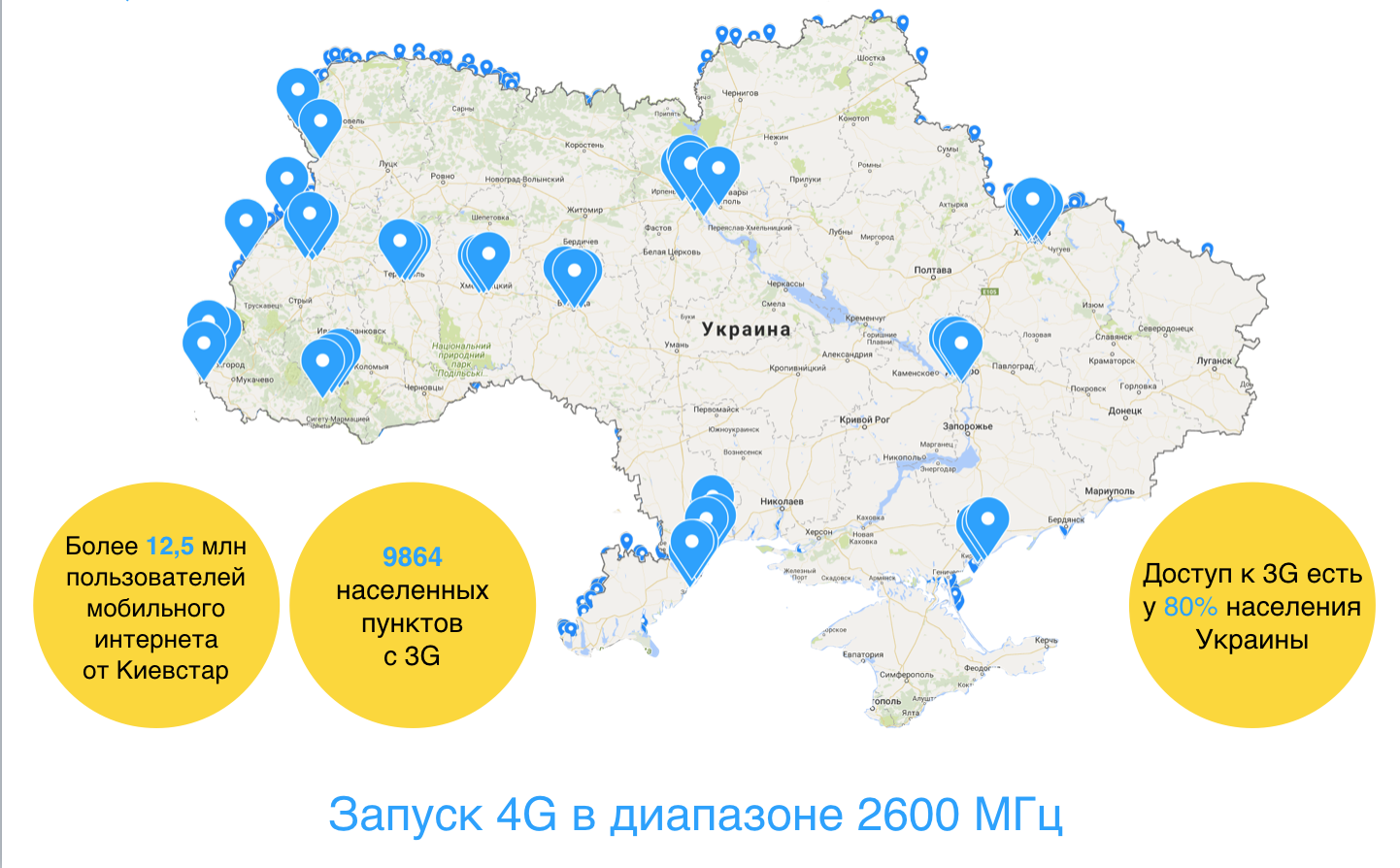
Why are the frequencies of 1800 MHz important?
The lower the frequency, the greater the coverage area and the less the base stations (read - direct foreign exchange costs) is necessary for network deployment. Frequencies of 2,600 MHz will increase the network capacity in large cities, where subscribers do not have enough 3G network capabilities, but these frequencies are useless for national coverage. To cover settlements, including villages and roads, frequencies in the range of 700-800-900 MHz are required, which are partially occupied by analog television and which should have been released a few years ago. Although before the upcoming presidential elections, none of the politicians have the courage to disable analog television (read - access of the "electorate" to the "zombie").

If we introduce technological neutrality (the next important step after the frequency reframing), then the construction of a 3G network at 900 MHz will make almost complete coverage of the territory of our rather large country. Kyivstar assures us that this can be done in just a year. The importance of such a step to overcome the digital divide can not be overemphasized. (Peter, as you asked, openly write that state authorities should introduce technological neutrality for mobile operators and allow them to use these frequencies in order to have 3G networks in our country not only in cities with a population of 50,000 people ).
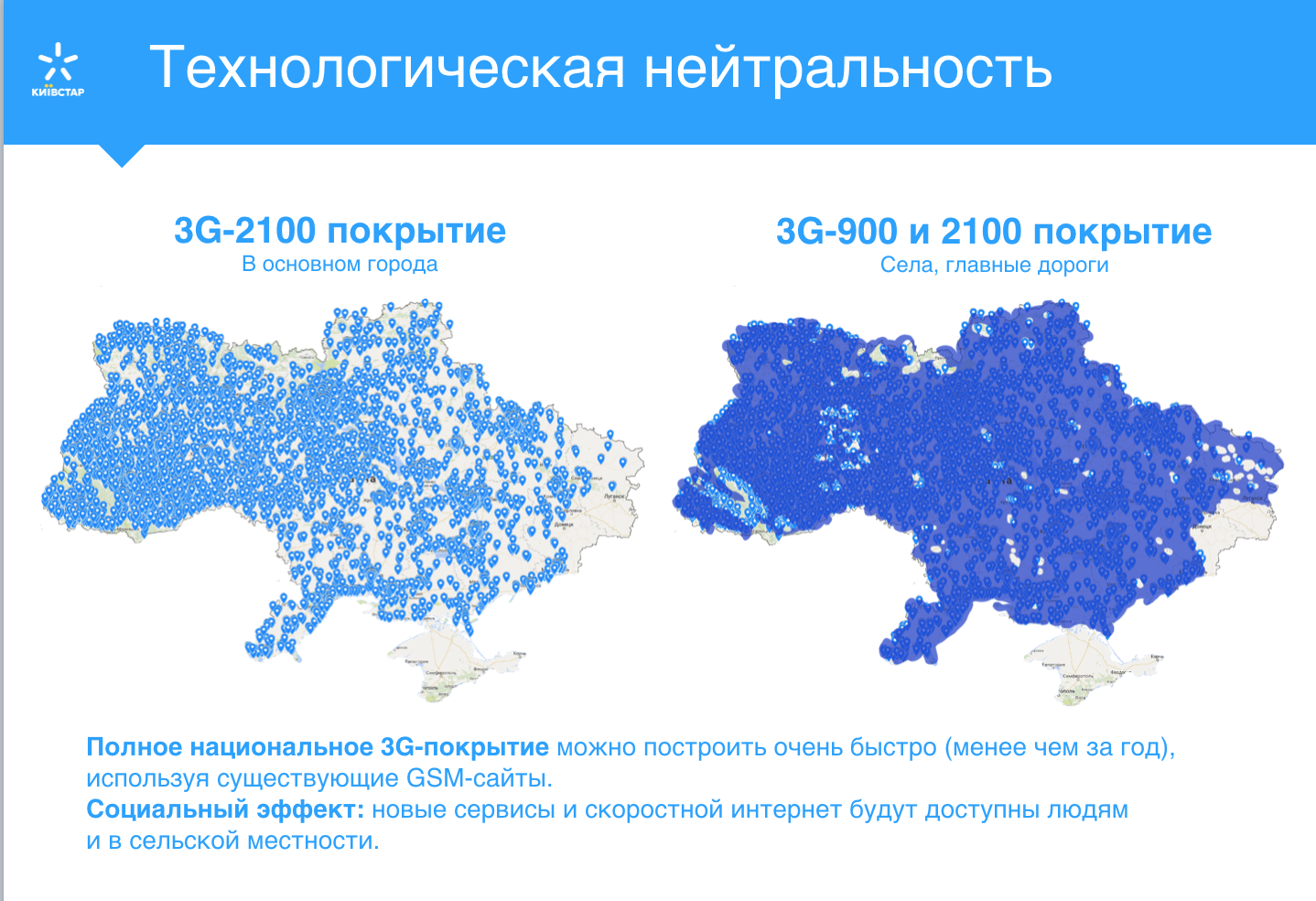
Why is the network being deployed for so long?
Despite the fact that all operators have declared (as in the case with the launch of 3G three years ago) their readiness to launch the network, there is no magic "switch". Moreover, if you want to use a new frequency band (2600 MHz), which they previously simply did not have. More details about all these misadventures can be read in our materials about why the process takes so much time and why 4G was not built immediately instead of 3G.
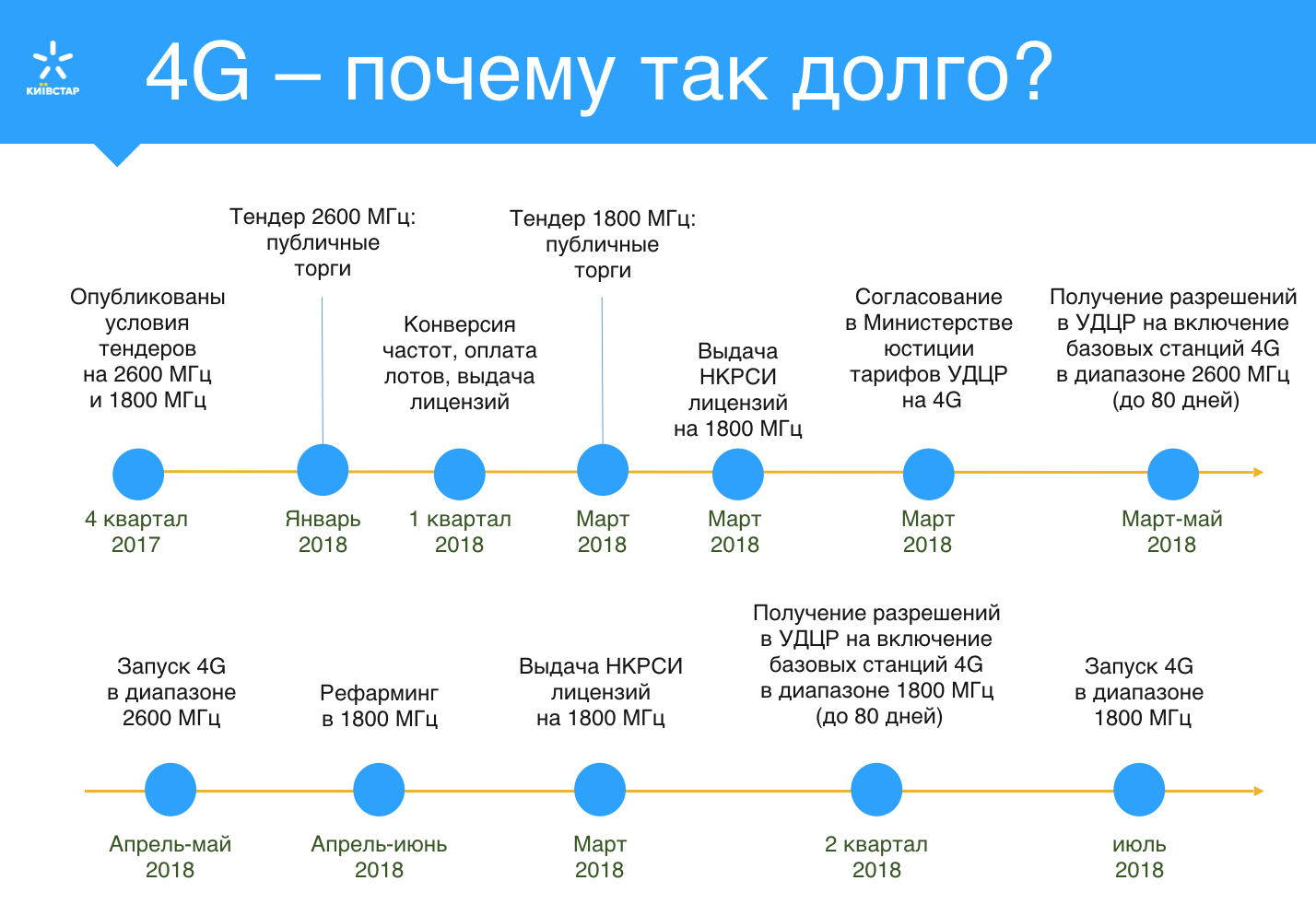
To assess the number of government bodies involved in the process, it is enough to look at this slide with a list:

We, by the way, have already written about why we need so many regulators and why the state regulates the development of mobile communications.
What will happen next?
In March this year, the country will host an auction for the sale of licenses for frequencies in the 1800 MHz range, after which they will be refarmed (what is the refarming and why it is needed). Now the distribution of frequencies in 1800 MHz looks like this:
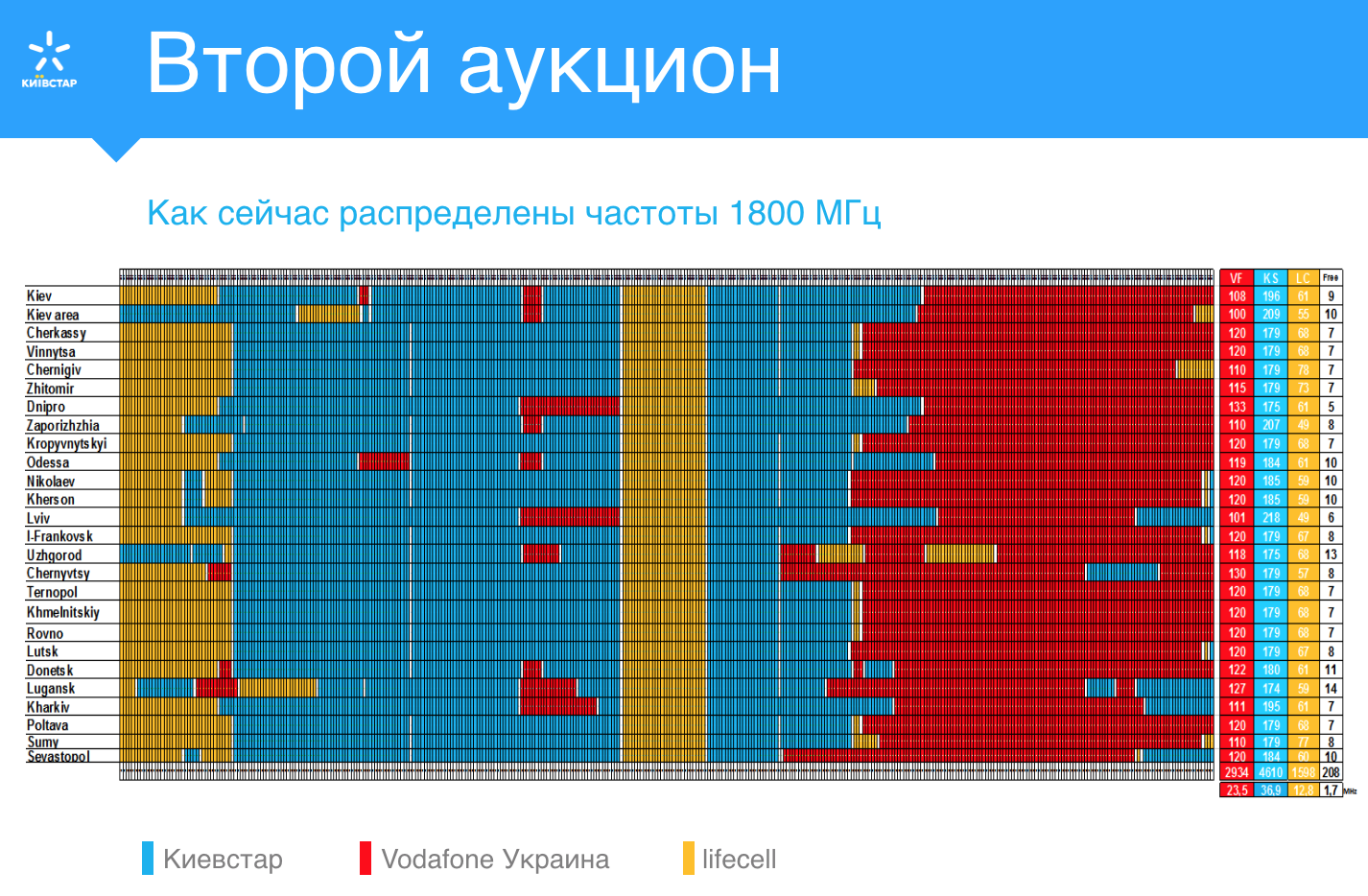
After reframing, they will look like this:

In addition to the lots that operators can redeem (these are their frequencies, which they will take away themselves, paying once again for them money), three more lots with 5 MHz bands will be put up for auction (they will be freed as a result of refarming).
Here we are waited by the sensational statement of the head of Kyivstar Peter Chernyshov:
"We want to buy two lots out of three, which will be put up for auction"
Chernyshov explains this step by the need of Kyivstar in large resources due to the fact that the company has the largest subscriber base. If this happens, the two remaining operators will have to fight for one remaining lot. And someone from the big three will not receive a bonus lot.
Results of Kyivstar in 2017
Over the past year, Kyivstar has retained its subscriber base, its growth was 1.7%. Today it is the largest Ukrainian mobile communication operator, serving 26.5 million Ukrainian users. ARPU (average monthly check from the subscriber) has grown over the year from 45 to 49 hryvnia. On the one hand, this indicates an increase in tariffs, on the other - it is unlikely that such growth is significant and explains all these "disturbances" in the Internet. Mobile communication in our country is still worth a penny, and subscribers are used to, sorry, do not even talk, but frankly tryndet on a mobile phone. The average time of 589 minutes is one of the highest rates in the world. It is obvious that Ukrainian mobile users have a sin to complain about life (although of course they will not stop doing it). The average traffic of Kyivstar's mobile users has almost doubled, now it is one gigabyte a month. It is clear that this figure will still grow - to the ceiling there, to put it mildly, far. In developed countries, this figure reaches 6-8 gigabytes. (No, boy, I'm aware that you can eat more, but it's about the average for the whole network, not for you alone).




How traffic grows
The volume of transmitted data in the network has grown even more than twice, according to its structure, Kyivstar for some reason does not result from its own data, but from the results of Ericsson's global research. But we already know that most of the traffic is video.
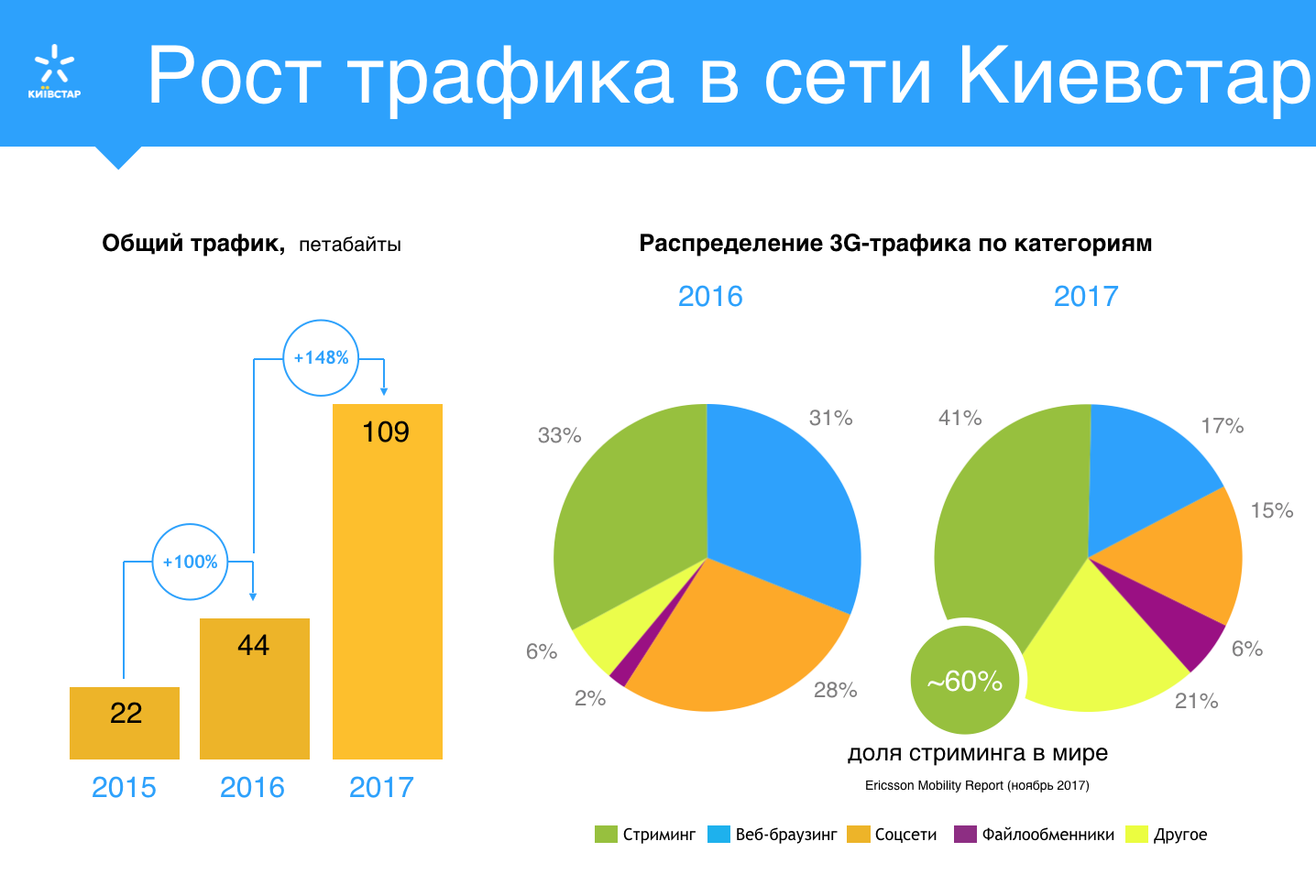
Smartphones for 4G
I do not know who cares so much about the availability of 4G-smartphones at the hands of Ukrainians, but their share, for obvious reasons, has grown significantly over the past couple of years. By the end of 2017, 44% of Kyivstar subscribers already used smartphones (our forecast for the end of 2018, I recall, is 60% -70% of smartphones for all operators). Of this number, 43% of smartphones already support 4G. There is nothing to worry about. By the time your 4G network appears in your locality, you will already have a 4G smartphone with a 50% probability. Another Kievstar cited interesting statistics, from which it follows that the most numerous smartphones in the company's network are Apple smartphones (greetings to all adepts of the sect "Apple soon kirdyk"). In second place Xiaomi, and only in the third - the market leader Samsung. The top five brands are completed by Meizu. Obviously, Huawei has something to strive for.
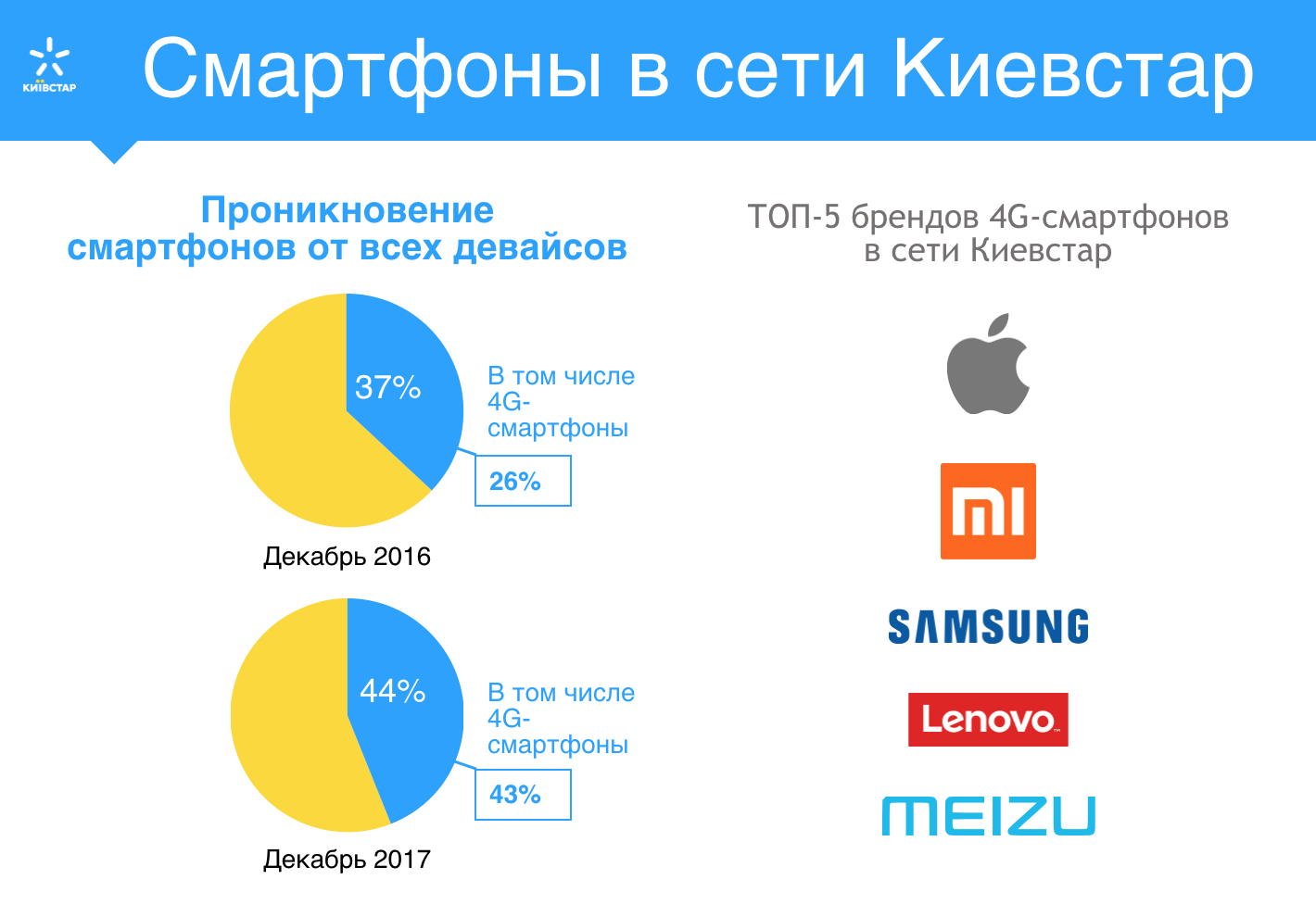
So what about the 4G speeds?
Especially for the gathered journalists, Kyivstar company organized the procedure with the official name "4G testing". In practice, it looks more like testing the laws of physics in one single room, which has little to do with the real situation in the network. Captain Evidence confirms that as a result of checking the laws of physics, we were convinced that they did the same - they also acted in local conditions, and not just in the rest of the universe. For testing, the engineering laboratory of Kyivstar was used, where the data transfer rate reached 650 megabits per second. In a real network, the speeds will be different, but (forgive, cap, select your bread) they will still be higher than in the 3G network due to circumstances (the network capacity will grow) and the same laws of physics. Yes, and applications that require a data transfer rate of hundreds of megabits still does not exist.

How much will 4G cost?
Captain Evidence reminds that in three years, since the launch of 3G in the principles of tariff formation of Ukrainian operators nothing has changed. Therefore, there will be no "special" tariffs for 4G, in principle. This is a new technology, but not a new service - in short, the width of the "pipe" will be greater. Imagine that your Internet provider has grown the width of external channels. Will he sell you the Internet more? I doubt it. Will he have tariff plans, where will there be more traffic and a higher monthly fee? Probably yes. We will see the same for Ukrainian operators. There will be new tariff plans, where there will be more traffic and higher price. Because there is simply no way to drop a subscription fee, it can only grow. The cost of one megabyte will fall. And we will soon think and count gigabytes. Moreover, the consumption of mobile Internet will undoubtedly grow.
For those who want to know more
- Technological neutrality and frequency reframing: Kyivstar told what to do to launch 4G in Ukraine
- National Commission: why does the state regulate mobile communications
- Why does the deployment of a 3G network in Ukraine take so long?
- Why Ukraine 3G in the era of 4G development
- 10 technical forecasts for 2018